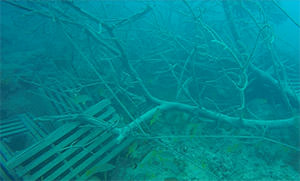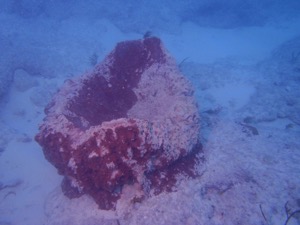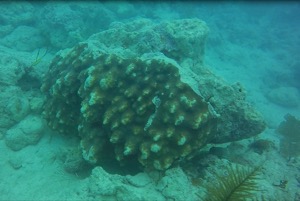NOAA and partners assess coral reef damage in Florida following Hurricane Irma
October 2017



Recently, scientists from Florida Keys National Marine Sanctuary joined other partners from NOAA and outside organizations to conduct a rapid assessment of the Florida Coral Reef Tract, including areas in the sanctuary, following Hurricane Irma. Preliminary reports from the team found extensive shifting of sand and heavy sediment accumulation, which can smother and prevent corals from getting enough sunlight, as well as some structural damage to individual corals and the reef itself.
This effort is the first step in a longer recovery process and helps NOAA begin assessing damage and start preparing and prioritizing future restoration activities. The rapid assessment took place October 9-19.
Science divers surveyed more than 50 sites, from Biscayne Bay to the Marquesas, and found widespread damage to sponges from storm-force waves, fast-moving debris, and heavy sediment deposits. They also found that the areas with the most damage were where the eye of the storm crossed the Middle and Lower Florida Keys, but the type and severity of the damage throughout the reef tract varied within regions and sites. Where it was feasible, teams also stabilized corals and removed debris to help accelerate recovery. A full report is expected later this fall.
This initial assessment covered only a small portion of the Florida Reef Tract, which stretches approximately 360 miles from Dry Tortugas National Park west of the Florida Keys to the St. Lucie Inlet in Martin County. It is the only living barrier reef in the continental United States.
Florida's coral reef ecosystems are an important part of the state's ocean economy. These natural resources support a vibrant tourism industry, provide jobs, protect lives and valuable coastal infrastructure, and so much more.
This collaborative effort included several NOAA programs: Office of National Marine Sanctuaries, NOAA Fisheries Habitat Conservation, Restoration Center and Southeast Regional Office, National Centers for Coastal Ocean Science and the Office for Coastal Management's Coral Reef Conservation Program. Additional partners include Florida Department of Environmental Protection, Florida Fish and Wildlife Conservation Commission, National Park Service, Nova Southeastern University, Coral Restoration Foundation, The Nature Conservancy and Florida Aquarium Center for Conservation and National Fish and Wildlife Foundation.

